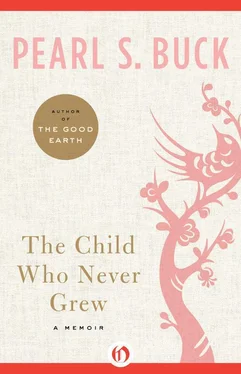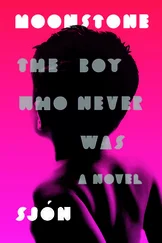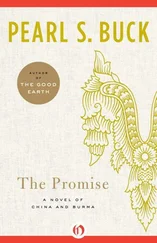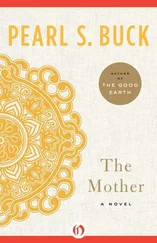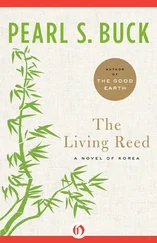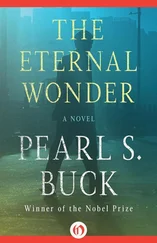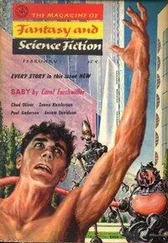Pearl S. Buck
The Child Who Never Grew
Foreword by James A. Michener
FOR SOME YEARS AT the close of World War II, three people who took writing seriously chanced to live near one another in an attractive corner of eastern Pennsylvania. Centering on the handsome rural town of Doylestown and not far from the artists’ colony at New Hope, their homes formed an isosceles triangle. At the southwest corner lived Oscar Hammerstein, gifted lyricist of many New York musical shows, and Pulitzer Prize winner in 1949 for the hugely successful South Pacific. Due north of him, eleven miles distant, I lived with my own prize in 1948 for having written the book on which the play was based. And eight miles to the west of each of us stood the stately but not ostentatious home of the famous Pearl Buck, winner of the Pulitzer in 1932 and the Nobel in 1938, both for her tremendously appealing novel The Good Earth.
We knew one another favorably, and by coincidence each of us had a strong connection with Asia. Pearl Buck’s prizewinning novel dealt with the agrarian peasants of China. Oscar Hammerstein’s Australian wife had a sister married to a Japanese, and I would soon have a Japanese wife, but she was born in Colorado and so had always had American citizenship, a fact which did not keep her from being interned in a camp during the war against Japan.
As we three met, and Miss Buck and I could be termed ‘old Asia hands,’ she brought to our attention the sad and sorry plight of babies who had been sired by American men in military uniform serving in Japan and Korea and then abandoned by their fathers and, shockingly often, by their mothers too. When such babies were either born in the United States or found their way here by devious routes, they were treated no better. As Pearl described to Oscar and me when she invited us to her farm one afternoon: “In our country if the children are totally abandoned, they’re most often thrown into some institution for the mentally defective, and there they run the risk of becoming truly retarded. They are doomed.”
“Why aren’t they put up for adoption?” Oscar asked, and she cried: “That’s why I invited you over. Because they’re half-white, half-Oriental, it’s always been assumed that they’re ineligible for adoption. No one tries to place them, and in the institutions they’re thrown into they wither.”
“That’s awful,” Hammerstein mumbled, for he was a man with a generous heart, and I seconded his castigation of such a system, but I doubt if either of us would have done much to alleviate it had not Miss Buck with that grim, fearless determination which had always marked her — she did not accept defeat easily — made this announcement: “I have not the slightest doubt in the world that these adorable babies are adoptable. And I propose to find them homes.”
“Where will you locate Japanese-American couples who might take the babies?” Hammerstein asked, and she surprised us by snapping: “We won’t worry about finding such marriages. We’ll place these lovable children in ordinary white homes, like yours or mine.”
“Will such people adopt half-caste babies?”
“We’ll no longer use that terribly pejorative term. Oscar, we’re all half-castes, one way or another. Portuguese-German parents, Russian-English, Swedish-Spanish. That is, if you go back far enough.”
And from that meeting and others like it, Pearl Buck with her iron will and the royalties from the blizzard of her books sold by her publisher husband, Richard Walsh of the John Day Company, launched Welcome House, a meticulously run orphanage for unadoptable Asian-American children, most of them fathered by American G.I.s.
In this way Hammerstein and I became deeply involved in finding homes for healthy, normal Eurasian babies — that is, father an American G.I., mother an Asian woman of Japanese, Korean, or Thai heritage — but we did not realize that we were unknowingly edging into a much bigger and more involved problem; the care and nurturing of children who through no fault of their own had mental retardation, children who are born physically competent but whose minds mysteriously stop growing. This book and my foreword deal with the heroic efforts Pearl Buck made to salvage these children, but how Hammerstein and I learned she was engaged in this greater problem will be explained shortly. For the moment we are still concentrating on the ordinary child, the abandoned offspring of the war.
When we launched our serious attempt to find the G.I. babies, we accumulated startling numbers, for traditional adoption agencies were glad to be rid of them, still convinced that they would never find homes in the United States. Pearl Buck worked tirelessly to convince ordinary American families — both husband and wife often Anglo-Saxon white — that her children, as she called them, would make fine additions to their families. She was remarkable in her energy, convincing in her persuasiveness. Before we had been in existence even half a year, she was finding one standard American family after another eager to accept these children.
In her campaign she was wonderfully assisted by the children, for they were adorable, laughing girls and sturdy boys. Sometimes their skin coloring and eye formation favored their Oriental mothers so that they were clearly Eurasian, but just as often it was their fathers’ genes that prevailed, and then it was difficult to guess their ancestry. But the important point is that during the years that Hammerstein and I helped her, we found ourselves with not one baby that was unadoptable. True, the fame of Miss Buck as a crusading writer sped the process of finding homes, but in our own less spectacular ways Hammerstein and I helped.
I must stress that much of the hard work, and the monetary contributions to Welcome House, came not from Hammerstein and me. Miss Buck had organized a powerful committee of her neighbors throughout the area to help, and it was they who kept Welcome House functioning. They were valiant assistants, not one of them with any affiliation to Asia. They made their crucial contributions because they were people of good heart.
However, Hammerstein and I were of critical assistance when our venture ran into a secondary obstacle which seemed insurmountable. When we accepted any abandoned child that the other agencies felt they could not place in a stable home, we found that a surprising percentage of them were the offspring of black military fathers and the Oriental women with whom they had lived while in Japan, Korea or Thailand. “These unfortunate children,” said the agencies who passed them along to us, “really are unadoptable,” and they wished us well after thanking us for having relieved them of a burden they could not handle.
Pearl Buck’s finest hour, so far as I witnessed her in action, came when she said with great force: “We welcome these half-black children. They’ll prove just as adoptable as the white-Oriental babies you originally told us were unadoptable. The simple fact is, you haven’t tried to place them.” And she became a heroic propagandist in convincing white married couples that these handsome, dark-skinned babies would mature into adults of whom the family would be proud. Through her unceasing pressure and brimming confidence, she found homes for every black-Oriental orphan who came our way, one of the triumphs of this remarkable woman.
Hammerstein had been deeply involved in these experiences when time came for him to write lyrics for the songs in South Pacific, and it could well have been his observation of Pearl Buck at work which inspired him to write one of the famous songs in the play. Joe Cable, the Marine lieutenant from Philadelphia’s Main Line and Princeton, is explaining why he cannot marry Liat, his Tonkinese sweetheart. In bitterly specific words, he sings that racial prejudice is not inherited, it is taught. Prior to the play’s opening on Broadway, several well-intentioned people approached me, begging that I advise Rodgers and Hammerstein to drop that song, because in a musical show which was supposed to be entertaining, it would grate. Adamantly Hammerstein refused: “That’s what the play is about,” and when Rodgers supported him, that song became one of the favorable talking points in the play.
Читать дальше
